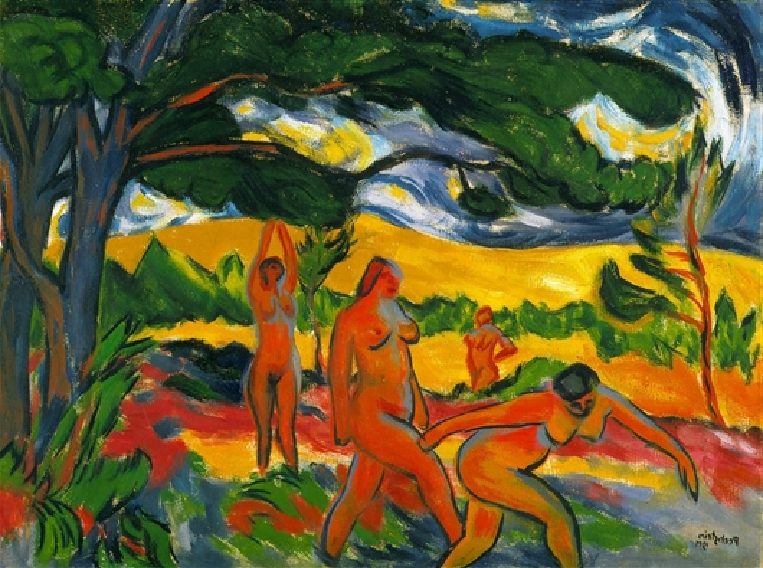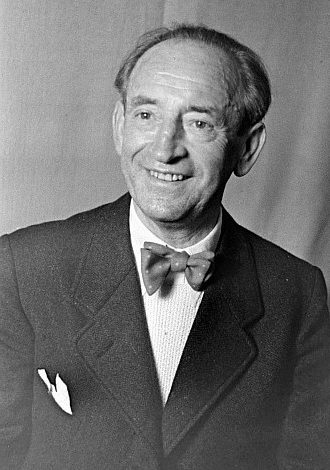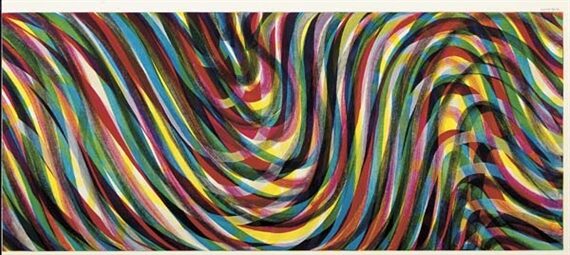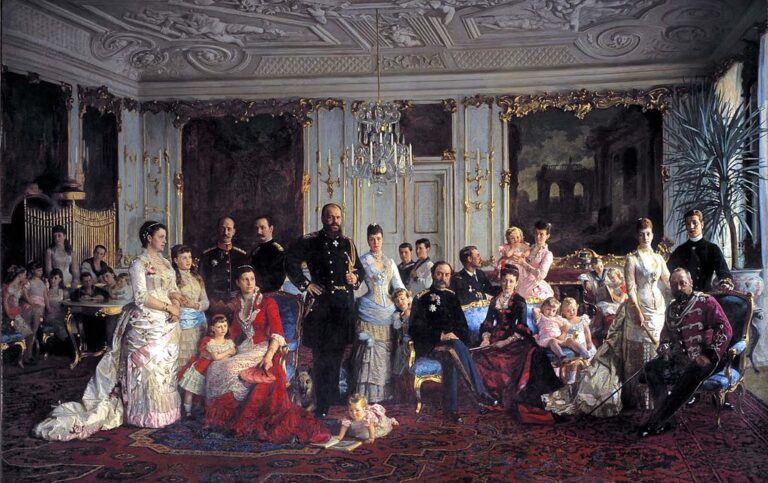Max Pechstein: Painter and Key Figure in German Expressionism
Born: 31 December 1881, Zwickau, German Empire
Death: 29 August 1955, West Berlin, West Germany
Art Movement: Expressionism
Nationality: German
Influenced By: Vincent van Gogh and Matisse
Institution: Royal Art Academy, Dresden
Max Pechstein: Painter and Key Figure in German Expressionism
Life and Career of Max Pechstein
Max Pechstein was a key figure in German Expressionism. He made his mark through bold paintings and prints that pushed artistic boundaries.
Early Years and Education
Max Pechstein was born in 1881 in Zwickau, Germany. As a young man, he worked as a decorator’s apprentice. This job sparked his interest in art.

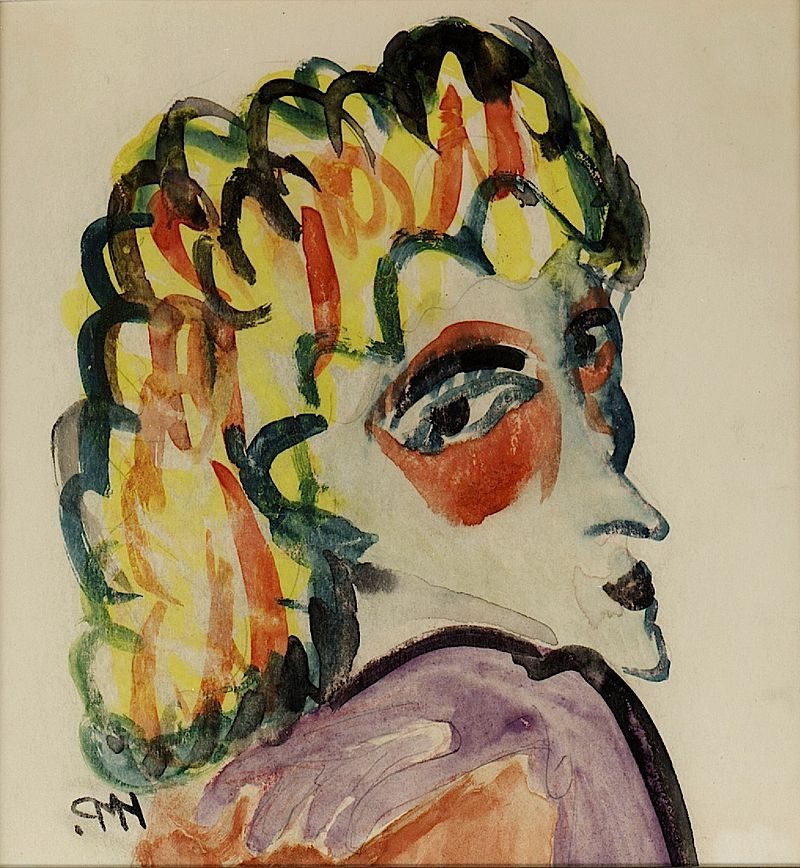
In 1900, Pechstein moved to Dresden to study at the Royal Art Academy. There, he honed his skills in painting and printmaking. The academy’s traditional methods didn’t satisfy him, though. He wanted to try new styles.
Brücke Group and Development of Style
Pechstein joined the Brücke group in 1906. This group of artists aimed to shake up the art world. They used bright colors and simple shapes in their work.
As part of Brücke, Pechstein’s style changed. He painted bold nudes and vivid landscapes. His art became more expressive and less realistic.
Pechstein moved to Berlin in 1908. He helped spread Brücke ideas to a wider audience. His art gained fame through shows with the Berlin Secession.
World War I and Aftermath
World War I changed Pechstein’s life and art. He served in the German army from 1915 to 1917. The war’s horrors left a mark on his work.
After the war, Pechstein’s art became less extreme. He still used bright colors, but his subjects were calmer. He painted many scenes of everyday life.
Pechstein taught at the Berlin Academy in the 1920s. He was well-known and respected in the art world during this time.
Nazi Persecution and Later Years
The Nazi regime labeled Pechstein’s art as “degenerate” in the 1930s. They banned his work and fired him from his teaching job.
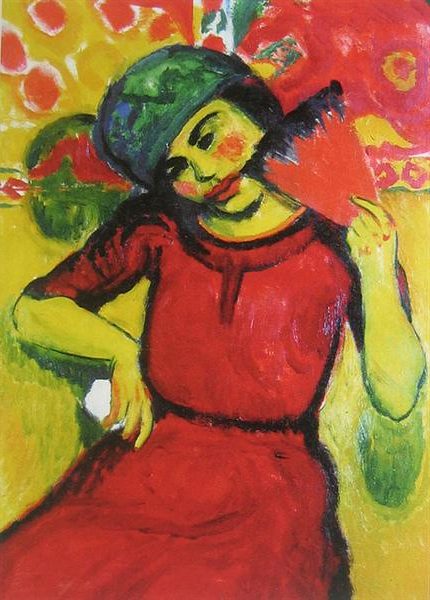
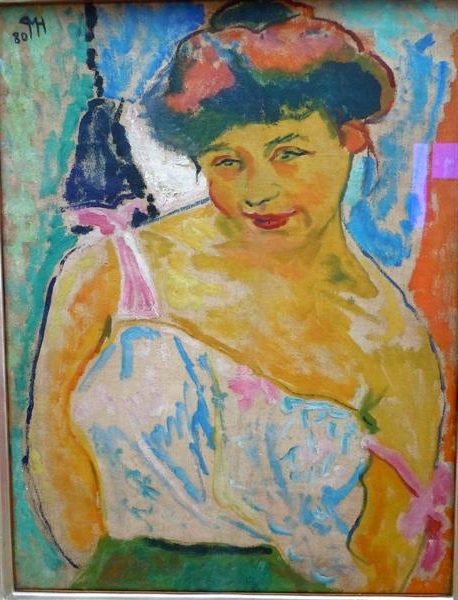
Pechstein had to stop showing his art in public. He moved to rural areas to avoid Nazi attention. Despite this, he kept painting in secret.
After World War II, Pechstein returned to Berlin. He started teaching again and received honors for his work. Pechstein died in Berlin in 1955, leaving a lasting mark on German art.
Artistic Contribution and Style
Max Pechstein made a big impact on German art. He helped shape the Expressionist movement and created many unique prints and paintings.
Expressionist Movement and Influence
Pechstein was a key member of Die Brücke, an important Expressionist group. His bold colors and simple shapes helped define the Expressionist style. Pechstein’s work showed the influence of artists like Vincent van Gogh and Matisse. He used bright, unnatural colors and thick brushstrokes to express emotions.
Pechstein’s art was part of a new way of painting in Germany. He broke away from traditional styles. His work inspired other artists to be more daring and expressive.
Printmaking Techniques
Pechstein was skilled at making prints. He created many woodcuts and lithographs. These prints often showed simple, powerful images.

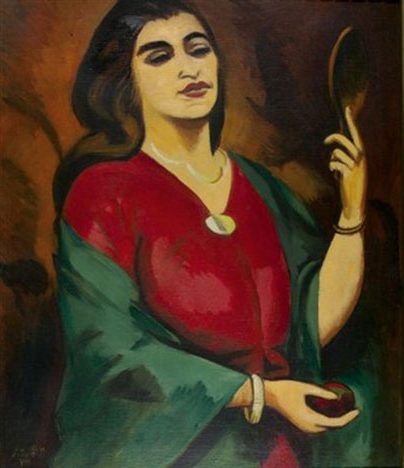
His woodcuts used strong black lines and flat areas of color. This style fit well with Expressionist ideas. Pechstein’s prints helped spread Expressionist art to more people.
He made prints of landscapes, city scenes, and people. These works showed his talent for simplifying shapes and using bold designs.
Themes and Subjects
Pechstein painted many different subjects. He loved to paint nudes and landscapes. His nudes often showed people in nature, with bright, unreal colors.
He also painted scenes from his travels. Pechstein visited Palau and was inspired by what he saw there. This led to paintings with a “primitivist” style, showing simple figures and bright colors.
Pechstein’s art often showed everyday life and nature. He painted fishermen, bathers, and scenes from small towns. These works captured the energy and spirit of the people and places he saw.
Legacy and Recognition
Max Pechstein’s impact on modern art remains significant. His bold use of color and expressive style influenced many artists who came after him. Museums around the world display his works, and his paintings fetch high prices at auctions.
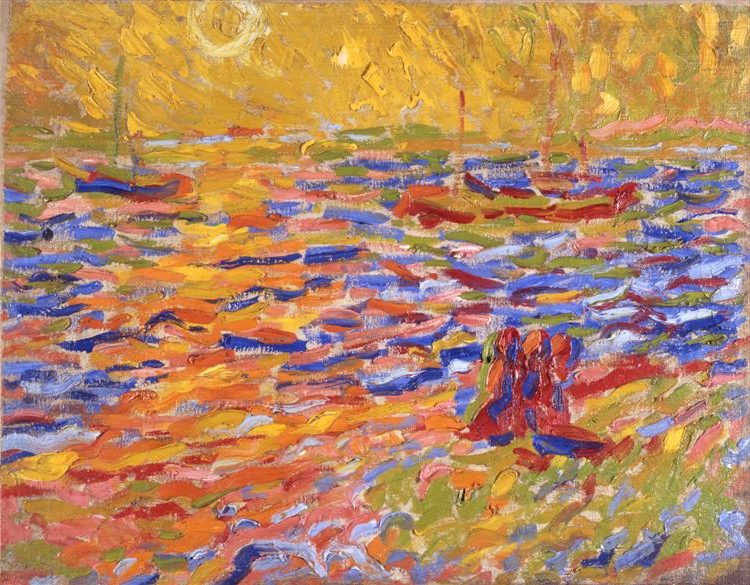
Flusslandschaft (River Landscape), 1907 by Max Pechstein
Influence on Modern Art
Pechstein’s role in Die Brücke and the Expressionist movement shaped 20th-century art. His vivid colors and simplified forms inspired many painters. Pechstein’s work bridged German Expressionism with French Fauvism, mixing bright hues with emotional depth.
His art challenged traditional styles, paving the way for new artistic freedoms. Pechstein’s prints and paintings showed everyday scenes in fresh, striking ways. This approach influenced later artists to express their inner visions boldly.
Collections and Museums
Major museums showcase Pechstein’s art. The Museum of Modern Art in New York holds some of his key works. German museums like the Brücke Museum in Berlin feature large collections of his paintings and prints.
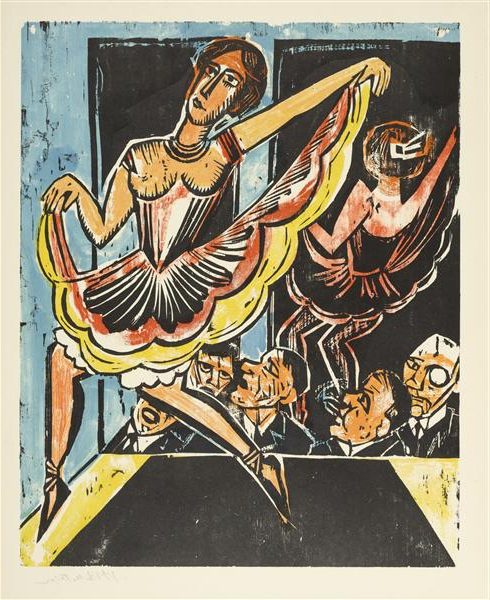
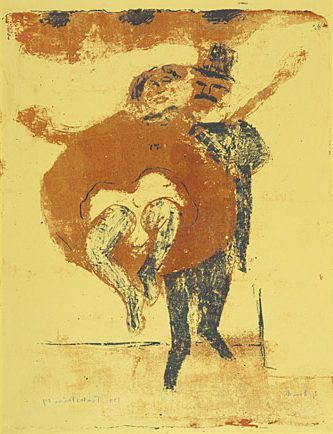
Other notable institutions with Pechstein’s art include:
- Städel Museum, Frankfurt
- Albertina, Vienna
- Detroit Institute of Arts
These museums help keep Pechstein’s legacy alive. They allow new generations to see his vibrant use of color and expressive style up close.
Market Value and Notable Auctions
Pechstein’s art commands high prices at auctions. His paintings, especially those from his time with Die Brücke, are prized by collectors. In recent years, some of his works have sold for millions of dollars.
Notable sales include:
- “The Yellow Mask I” sold for $7.4 million at Sotheby’s in 2011
- “Weib mit Inder auf Teppich” fetched $5.5 million in 2018
These prices show the lasting value of Pechstein’s art. They reflect his important place in art history and the continued interest in German Expressionism.
Frequently Asked Questions
What is Max Pechstein known for in the art world?
Max Pechstein is known for his vibrant paintings and prints. He used bright colors and simple shapes in his art. Pechstein’s work often showed scenes of nature and everyday life.
How did Max Pechstein contribute to the Expressionist movement?
Pechstein helped shape German Expressionism through his art. He was part of the Die Brücke group, which pushed for new ways of painting. His bold colors and strong brushstrokes became hallmarks of the movement.
What characterizes the style and techniques used by Max Pechstein in his paintings?
Pechstein’s style featured bright, non-natural colors. He used thick brushstrokes and simple forms. His paintings often had a flat, two-dimensional look. Pechstein liked to paint landscapes, city scenes, and portraits.
Can you name some of the most influential works by Max Pechstein?
Some of Pechstein’s key works include “Under the Trees” from 1911. This painting shows his use of bold colors and simplified forms. “Young Woman with a Red Fan” is another well-known piece that displays his Expressionist style.
How has Max Pechstein’s work influenced modern art?
Pechstein’s work helped pave the way for modern art styles. His use of color and form inspired later artists. His prints and paintings showed that art could be emotional and expressive, not just realistic.
What was Max Pechstein’s association with Die Brücke artists’ group?
Pechstein was a member of Die Brücke from 1906 to 1911. This group of artists worked together to create a new style of art. They shared ideas and techniques, helping to shape German Expressionism.

